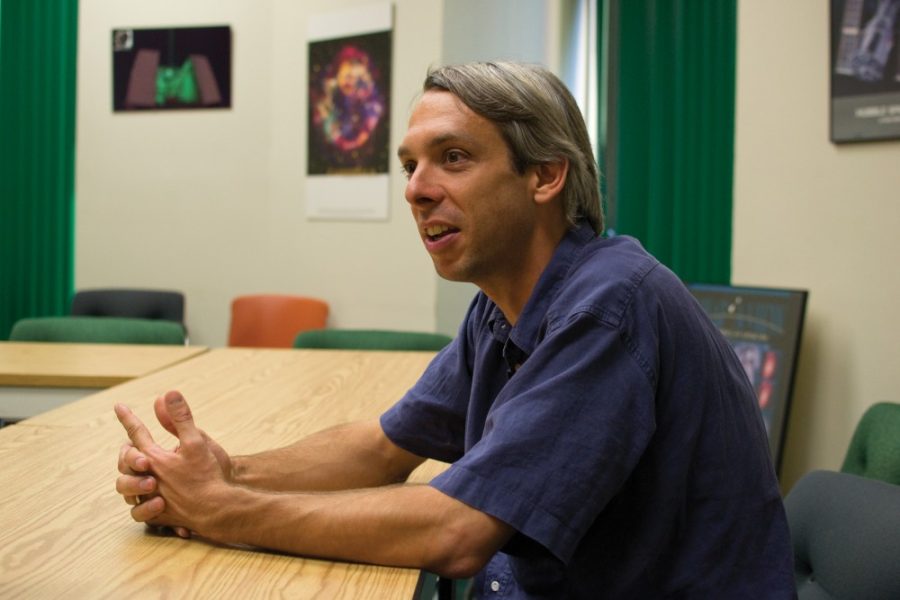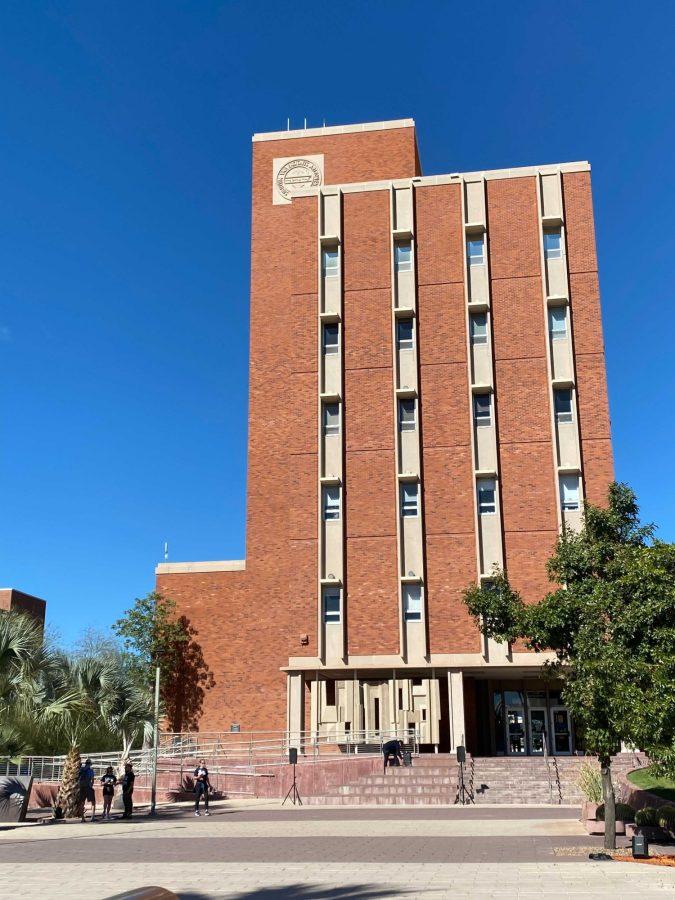A UA professor has been chosen from a handful of professionals nationwide to receive an award recognizing his research.
Olivier Guyon, assistant professor in astronomy and optics at UA, was named a MacArthur Fellow for his research in discovering planets around other stars.
The award was given to only 22 other people this year, and comes with a $500,000 grant which is paid over the course of five years.
“I’m extremely grateful for it. It’s a huge endorsement of the work I’ve been doing,” Guyon said.
Guyon said he is interested in using the resources the award provides to develop more public outreach. One project he’s currently working on is developing technology to allow consumer cameras to discover planets by watching to see if a star is dimmed by an orbiting planet passing in front of it. The prototype he is currently devloping uses two Canon DSLR cameras.
“This is something that I hope we can engage the public, amateur astronomers and even schools to participate in astronomical research,” he said.
Guyon worked at the Japanese National Observatory in Hawaii before becoming an assistant professor in 2008 and now splits his time between working at the UA and the observatory.
Guyon said the strength of the UA in optics and astronomy drew him to the university, but also the strong link between both departments.
“The University of Arizona is really a unique place for someone like me, who works in optics for astronomy,” Guyon said.
While Guyon was attracted to the university in the first place, his current coworkers were eager to make him a part of the team.
“I was very keen to get him here to UA,” said professor of astronomy Roger Angel. “In the area he was working in, he was publishing the best papers in the world. I recognized he was doing super work. [Guyon is] extraordinary in the sense that he covers the whole range in terms of writing papers covering the fundamentals of topics, to going into the lab and making very specific and fine-tuned equipment.”
Guyon has focused on planets which could potentially be habitable or are composed similarly to the Earth, and which orbit their star within a particular range of distance. The problem is, the planets are hard to detect because they are so much smaller than the stars they orbit.
Guyon has overcome this issue in two ways. One is by developing optical techniques and the equipment necessary to use them, which make it possible to see very faint objects next to very bright objects — a technique called coronagraphy. Guyon’s use of coronagraphy is much more efficient than previous implementations and allows telescopes to be half as large while still producing the same quality image. This, in turn, greatly reduces the cost of building the necessary telescopes.
The other method he worked on is called astrometry which involves measuring the position of stars in the sky with extreme precision. If there is a planet around the star, the planet will affect its motion. This effect is incredibly small, since the planet is often ten billion times smaller than the star it orbits, according to Guyon.
“What distinguishes [Guyon] from others working on similar instruments is not only the large number of clever and workable ideas on his part, but also that he has a deep theoretical understanding of the issues,” said George Rieke, an astronomy professor and one of Guyon’s colleagues. “This combination has made him unique in the field.”









